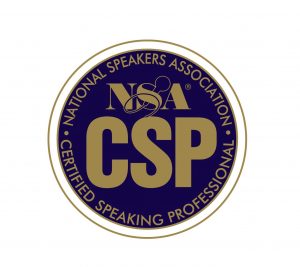This blog shares Phase Two of the process I used with a committee that I have been leading since July 2016. The process consists of creating a vision, engaging members and putting the structures in place to ensure successful implementation of a project in any organization.
Vision – The Devil is In the Details
As stated in the blog on June 1, 2017, (Click here to read the 1st blog) we created a broad vision to standardize material for a three-day workshop, as well as scale back the content so it wasn’t so overwhelming for participants.
As the group of 20 got to know each other better through our monthly Lead Dog and team calls, the ideas, creativity and innovation for improving the vision and hence our “product” of a three-day workshop expanded. Some of these ideas became “tag lines” that became a code for how we worked together to create this new program.
For example:
- “Only what they need to know” became a reminder to streamline content and delivery.
- Flash drives were used to hold material that may not be covered in the workshop but contained information or templates they would need for later. Having information on the flash drives also saved a lot of trees and lugging heavy binders while travelling.
- “We’re role models.” This team wanted to be role models for how an effective team planned, communicated and operated. We wanted to demonstrate how technology and collaboration can make a difference in the end result.
- “Experience Chapter Leadership.” This was an extension of being role models. From the time participants got off the bus on Friday to the time they went to the airport on Sunday, we knew we were creating an experience for the participants through every group activity, discussion and even their free time and meals.
The good news is that, as professional speakers, many of these concepts are embedded in what we already do; we create the experience.
Member Engagement
As the leader of this team, I spoke to the whole group once a month. In addition to regular Lead Dog Calls, I tried to talk to 1-2 individual members each month. The purpose of my calls was to get to know them better and see how they felt about the experience of being on this committee and the progress of our work. Sometimes it was just a voice message; sometimes it was an hour-long conversation. Relationships were developing throughout the team, and members were committed and having fun.
Structures for Success
While the Lead Dogs worked with their teams, I was working with headquarter staff on the logistics for this event. Agendas, schedules, menus and special events were being planned.
Consistent with the focus on being role models and creating an experience, we decided we needed to have an off-site activity that got people outside of the conference room and also provided exposure to different ways of organizational thinking. The staff arranged an afternoon at a modern art museum where the museum staff talked about membership and marketing for their organization, which correlated to two of our topics that day.
The concept was a good idea, but truth be told, since it was a new installation at a modern art exhibit, there were some “awkward” exhibits. But the participants unanimously appreciated our attempt to try something new. Lesson learned: whenever possible, check out the destination before you bring 50-75 people for a learning experience!
Unlike previous years when we were still frantically creating our presentations on the morning the workshop started, this team was totally prepared before arriving in Phoenix for the workshop. We had a “dry run” the Thursday afternoon before the workshop started. Since arrival times varied, each team had at least one member representative for their team’s material. We walked through every slide, handout, discussion, activity, flash drive items and transition to the next team. We found a few missing pieces and duplications. Team members had “ownership” in presenting the material their team created and we all felt confident in the process and the product we created.
And the next morning we had one more walk through for the whole team. Then we had 2 hours to enjoy each other’s company and have fun before the participants arrived. We were relaxed and ready to give it our best for the next 3 days. Yay.
Summary of Phase Two – For Use in Any Organization
To summarize in generic terms what made this process successful in Phase Two:
- Regular interaction and conversations helped to refine ideas, expectations, deliverables and issues.
- Teams were empowered to create and had ownership of the process.
- Deadlines and deliverables were clearly defined and discussed.
- Have an environment where people can challenge each other to be sure the process or end result is consistent with the vision or desired outcomes.
- Encourage people to collaborated across functional teams to create the best end result.
- Regular group and individual conversations solidified the team’s commitment to their group and the team.
- Attention to detail regarding participant (or customer) experience is essential.
The next blog on June 29, 2017 will include the results of the 3-day workshop, pictures and feedback from participants and the team.
Marty Stanley, Certified Speaking Professional, is a national speaker, facilitator and executive coach. As Chair of the Chapter Leadership Committee for the National Speakers Association, she is responsible for interviewing, selecting and leading a team of 20 professional speakers who are past Chapter presidents. The Chapter Leadership team is responsible for designing, developing and delivering relevant board leadership and governance training and coaching presidents-elect for over 40 National Speakers Association chapters throughout the United States, Canada and Australia.
martystanley@alteringoutcomes.com www.alteringoutcomes.com https://www.linkedin.com/in/martystanley
858-432-6764 816-695-5453
For more information on being a Type T leader, watch this 1 minute video.
Or order the book on How to Be a Transformational Leader in a Bottom-Line World.









